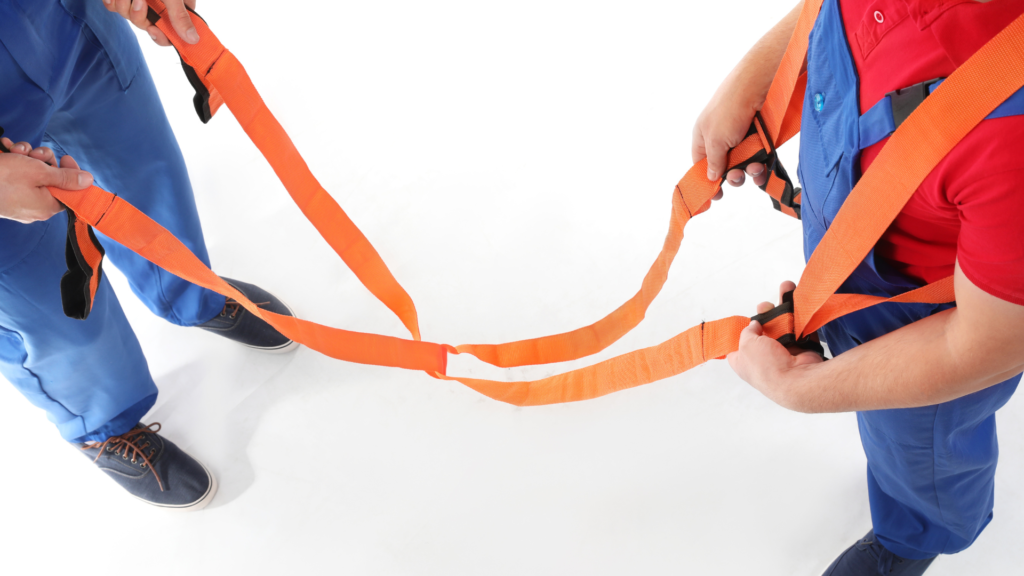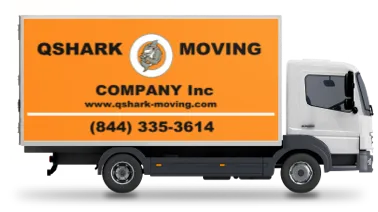How to Use Moving Straps

Summary: Learn the ins and outs of How to Use Moving Straps, an essential tool for any moving process. From understanding different types of straps to detailed steps on how to use them, this guide aims to make your moving process smoother and safer.
| Sections | Key Points |
|---|---|
| Understanding Moving Straps | Moving straps are essential tools for lifting and moving heavy items. Types include Shoulder Dolly, Forearm Forklift, Hump Straps, and Appliance Straps. |
| Choosing the Right Moving Straps | Consider the weight and type of items to be moved. Ensure the straps can support the weight and are suitable for the shape/size of your items. |
| Preparing for the Move | Prepare your items, position the moving straps correctly, and clear your pathway before starting the move. |
| Using Moving Straps | Position the straps, lift the item using your leg muscles, move slowly towards your destination, and navigate through spaces with caution. |
| Tips and Best Practices | Follow safety tips, maintain your moving straps, and avoid common mistakes such as overloading the straps or poor communication. |
I. Introduction
Moving can be a strenuous task, often filled with heavy lifting and the risk of potential injuries. However, certain tools can significantly lighten the load, making your move safer and more efficient. One such tool is the moving strap. At QShark Moving Company, we firmly believe in the importance of education when moving safely and efficiently. In line with this, we’ve prepared a comprehensive guide on how to use moving straps.
In this guide, you’ll learn about the following:
- What are moving straps and their various types
- How to choose the right straps for your needs
- Preparing for the move and how to position your moving straps correctly
- A step-by-step process on how to use moving straps
- Tips, best practices, and common mistakes to avoid
As your trusted professional movers, we aim to make your moving process as smooth as possible. We encourage you to read this guide carefully, apply the techniques, and take the first step toward a safer, more efficient move. Let’s dive in!
II. Understanding Moving Straps
Before we delve into how to use moving straps, let’s first understand what they are. Moving or furniture or lifting straps are tools used to move, lift, and maneuver heavy or bulky items easily and safely. These straps can greatly reduce the risk of injuries and damage to your items during a move.
There are various types of moving straps available on the market:
- Shoulder Dolly: These are two individual straps that go over the shoulder and under the arm and are used by two people to lift and carry a heavy object. It allows the users to maintain an upright posture while moving the object.
- Forearm Forklift: This type of moving strap wraps around the forearm of two individuals and works best for long and bulky items, like a couch or a mattress.
- Hump Straps: A hump strap is a single strap that wraps around the item to be moved, providing a point of leverage. One or two individuals can use this.
- Appliance Straps: These are similar to shoulder dollies but have an additional ratchet system for extra security when moving heavy appliances.
Each type of moving strap has its advantages and specific use cases. The key is to choose the one that best suits your specific needs.

III. Choosing the Right Moving Straps
Choosing the right equipment ensures a smooth and safe moving process. Here are some factors to consider:
- Weight of Items: Look at the items you plan to move. Different straps have different weight capacities. Ensure the straps you choose can support the weight of your items.
- Type of Items: The shape and size of the item can also determine which type of moving strap is most suitable. For example, a forearm forklift may be best for long, bulky items, while an appliance strap may be more suitable for heavy, boxy items like a washing machine or a refrigerator.
If you need assistance, QShark Moving Company, your trusted local movers, can provide recommendations based on our years of experience in the moving industry.
IV. Preparing for the Move
Now that you have your moving straps chosen, it’s time to prepare for the move. This step is crucial for ensuring a smooth, safe moving process.
A. Preparing Your Items
Start by preparing the items you plan to move. Make sure they’re clean and any loose parts are secured. If possible, disassemble large furniture into smaller, more manageable pieces.
B. Positioning the Moving Straps
Next, place the moving strap under the item. The positioning may vary depending on the type of strap you’re using:
- Shoulder Dolly/Forearm Forklift: Place the strap at the item’s center, balancing its weight equally. Each person should stand at opposite ends of the item, with the strap positioned on their shoulder or forearm.
- Hump Strap: Wrap the strap around the item at a point where you can get the most leverage.
- Appliance Strap: Position the strap around the middle of the appliance, ensuring the ratchet is in a position that’s easy to access.
C. Preparing the Pathway
Ensure your path is clear of obstacles. Plan your route, taking into account any doorways, stairs, or tight spaces you may have to navigate through.
V. Using Moving Straps: Step-by-step Process
Now that everything is set up let’s get into the details of using the moving straps.
A. Positioning the Straps
Stand on opposite sides of the item. Slide the moving strap under the item until it’s approximately midway, ensuring an even weight distribution.
B. Lifting the Item
Bend your knees and keep your back straight as you prepare to lift the item. Using your leg muscles instead of your back will help prevent injuries. Communicate with your partner and lift the item together.
C. Moving the Item
Slowly move towards your destination, keeping the item balanced. Communicate with your partner if you need to rest or are having difficulty maneuvering.
D. Navigating Through Spaces
You might need to tilt or turn the item when moving through doors or tight spaces. Always communicate with your partner and move slowly to avoid sudden weight shifts.
These steps may vary depending on the type of straps you’re using. Always remember that safety is a priority. If you feel unsure or unsafe, don’t hesitate to contact professional movers like QShark Moving Company for assistance.

VI. Tips and Best Practices
Utilizing moving straps effectively involves more than just understanding the basic usage. Here are some additional tips and best practices to ensure a safer and more efficient moving process:
A. Safety Tips
- Always wear closed-toe shoes when moving heavy items to protect your feet.
- Avoid twisting your body when carrying the load; pivot with your feet.
- If you need to go up or down stairs, go backward so you can see where you’re going.
B. Maintenance and Care for Moving Straps
- Regularly check your equipment for wear and tear. If you notice any signs of damage, replace them immediately.
- After use, clean your straps according to the manufacturer’s instructions, then store them in a dry place to prevent damage.
C. Common Mistakes to Avoid
- Overloading the straps: Always adhere to the weight limit stated by the manufacturer to avoid accidents.
- Poor communication: Good communication is key when using moving straps, especially types that require two people. Plan your moves and communicate clearly with your partner.
- Ignoring discomfort: If you feel any discomfort or strain, stop immediately. Remember, safety comes first.
VII. Conclusion How to Use Moving Straps
Moving straps are essential tools for any relocation process. They not only make the task of moving heavy items easier but also significantly reduce the risk of injuries. As your trusted cheap movers, we at QShark Movers hope this guide has provided you with a comprehensive understanding of how to use straps. You can make your moving process much smoother and safer with the right techniques and precautions.
Appendices
To supplement the main content of this guide, we’ve also included an appendix section. Here, we’ll provide additional information to assist you in your moving journey.
A. Glossary of Terms
Understanding the terminology related to moving straps can make your moving process much smoother. Here’s a brief glossary:
- Leverage: The mechanical advantage or power gained through using a lever.
- Load: The item or items being moved.
- Ratchet: A mechanical device that allows continuous linear or rotary motion in one direction while preventing motion in the opposite direction. Often used for tightening straps.
- Distribution of Weight: The even spreading out of weight for balanced moving.
B. FAQ
- Can one person use moving straps? While some moving straps are designed for two-person use, there are straps like the hump strap that a single person can use.
- Are moving straps safe to use? When used correctly, they can significantly reduce the risk of injuries during a move. They distribute the weight of the load evenly, minimizing strain on your body.
- Where can I buy moving straps? They are available in many places, including online stores, home improvement stores, or directly from your local movers.


 How to Label Moving Boxes
How to Label Moving Boxes Tips to Handle Moving Stress
Tips to Handle Moving Stress Tips to Declutter Before Moving
Tips to Declutter Before Moving How to Pack a Garage for Moving
How to Pack a Garage for Moving How to Pack a Desktop Computer for Moving
How to Pack a Desktop Computer for Moving